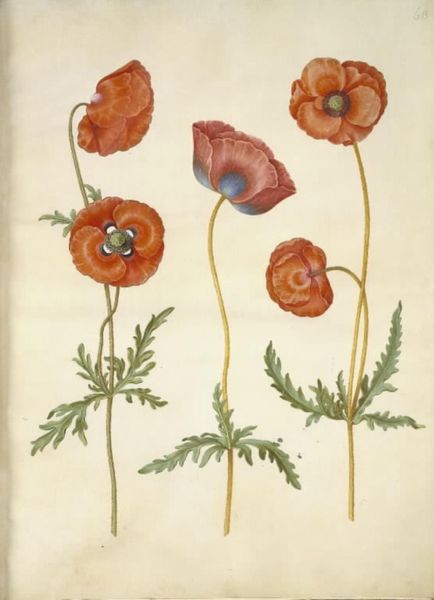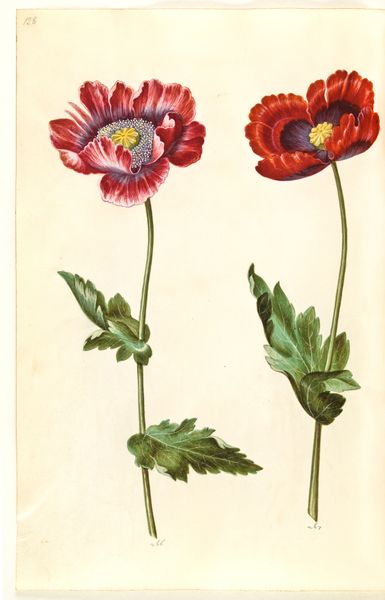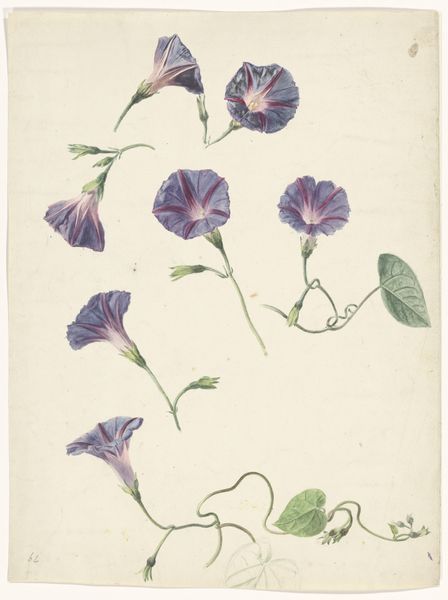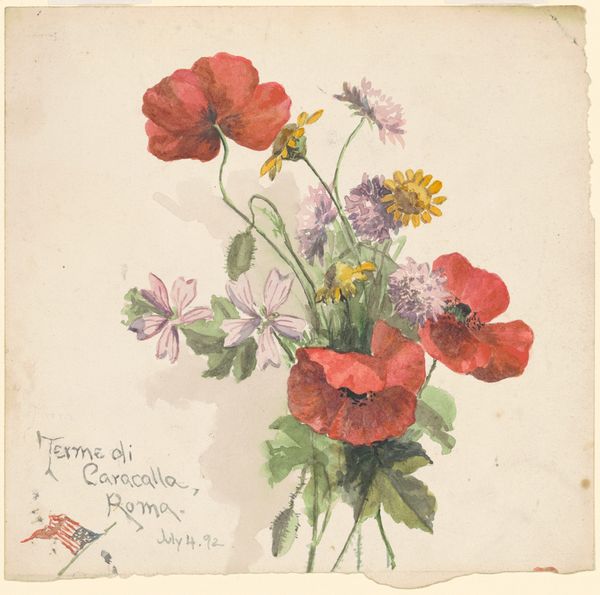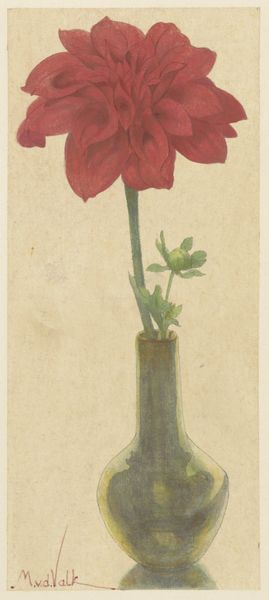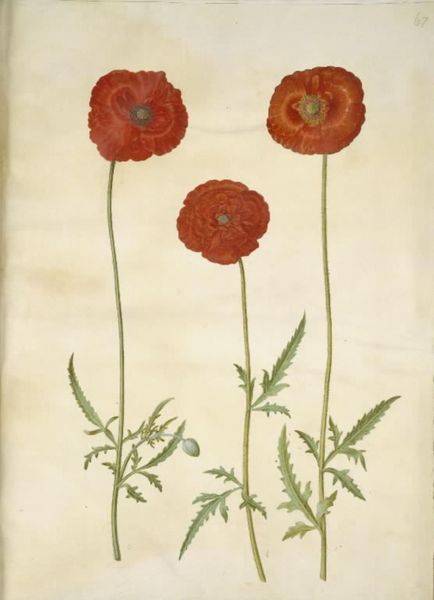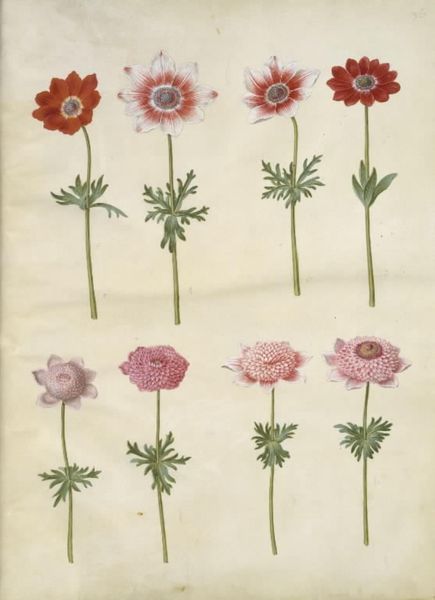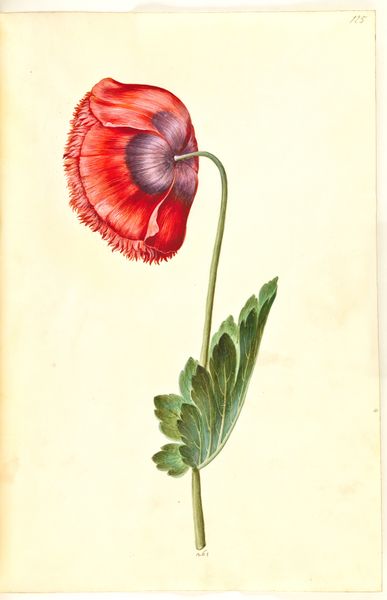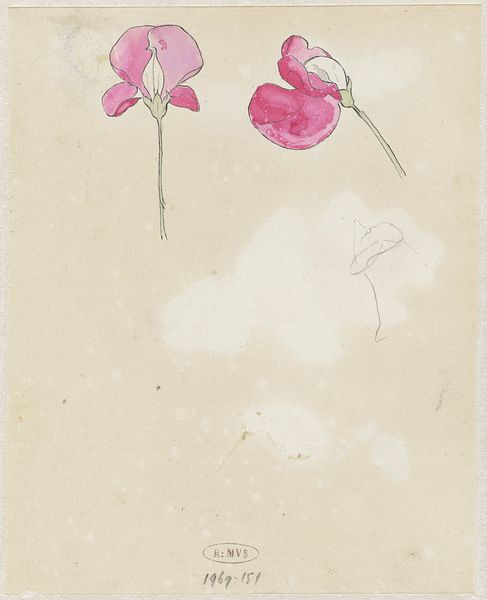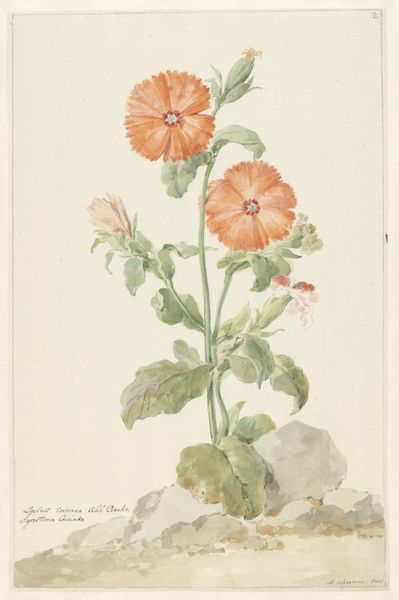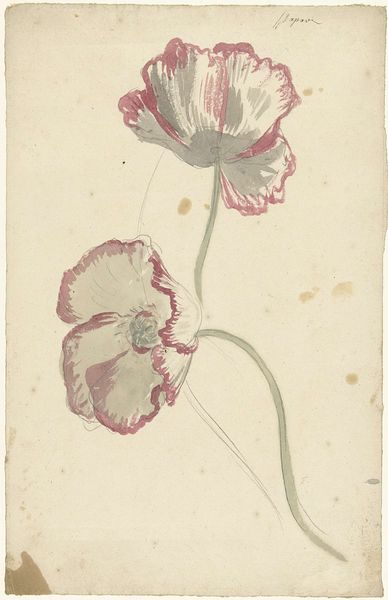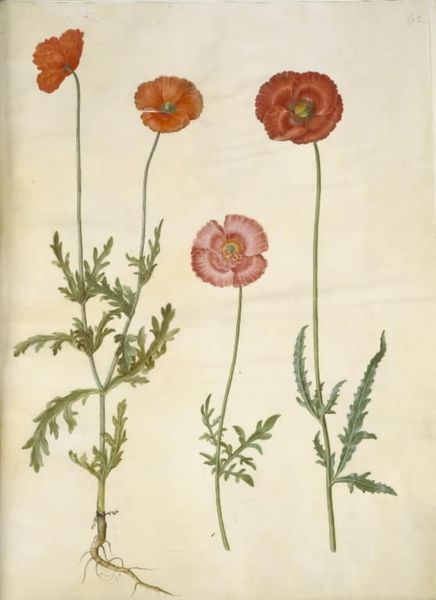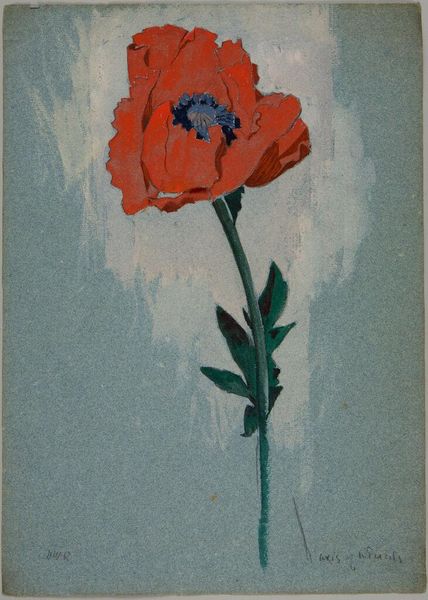
Dimensions: height 297 mm, width 183 mm
Copyright: Rijks Museum: Open Domain
Curator: Here we have "Klaprozen", or "Poppies", a delicate watercolor and ink drawing created by Willem Wenckebach sometime before 1893. It's part of the Rijksmuseum's collection. Editor: Immediately striking is the controlled wildness—the blooms practically leap off the parchment, even with the restraint of the linework. Curator: Indeed. Wenckebach's skillful use of line, particularly in the stems, creates a wonderful sense of rhythmic movement. Note also the washes of colour; the varying densities emphasize the depth of the poppy petals, rendering the medium weight well. Editor: Given its existence before 1893, one wonders about the societal context in which these poppies were depicted. The poppy as a symbol, often connected to sleep, remembrance, even oblivion, might reflect fin-de-siècle anxieties. Curator: The choice of a relatively subdued color palette is a counterpoint, wouldn’t you agree? Wenckebach carefully restricts the vibrancy of his pigment in this botanical study, but the limited color palette ensures attention isn’t pulled from its shape, which is, after all, of primal import. Editor: A fair assessment. Still, consider the potential audience. Botanical illustrations frequently circulated amongst scientific circles and wealthier educated populations. In that light, his subtle approach avoids the flamboyance often associated with other representations of nature, making the drawing less overtly aesthetic, and in keeping with naturalistic depictions prized during the rise of positivist disciplines. Curator: Interesting. In observing the almost calligraphic signature, and the title beneath in translation, one is brought back to Wenckebach’s commitment to clear compositional structure with careful, subtle gradations and line-work. There’s real commitment in it. Editor: Ultimately, regardless of the potential symbolism, the work offers a glimpse into the intersection of artistic expression, naturalistic observation, and the society that nurtured its creation. Curator: I quite agree—it’s an economical but nuanced drawing; an artifact which has, happily, managed to survive its own context.
Comments
No comments
Be the first to comment and join the conversation on the ultimate creative platform.
